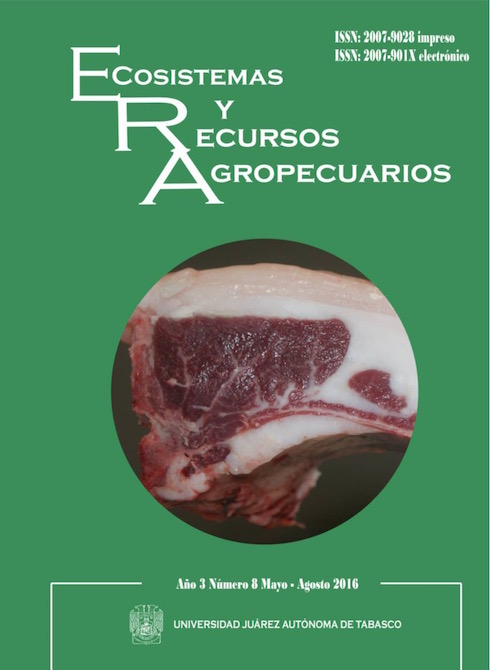TROPHIC CIRCULATION IN ECOSYSTEMS
DOI:
https://doi.org/10.19136/era.a3n8.676Keywords:
ecosystem, trophic flow, food web, thermodynamics, dissipative structuresAbstract
The trophic aspect of ecology has been studied for more than six decades; in this contribution we address theoretical aspects relative to the concept of trophic ow at the ecosystem level and from the thermodynamics point of view. Much of this knowledge is greatly based on the consideration that ecosystems are functional units that are worth global study. Undoubtedly, a key element in the study of ecosystems relates to energy circulation through food webs. Although trophic ecology has been a su ciently studied topic, we have not found a formal description of the trophic ow concept. Thus, this work proposes a concept based on movements of matter and energy amongst the biological components of the ecosystem. We include Odum's universal model of energy ow to synthesize the concept of trophic ow in the ecosystem. Additionally, we analyze the ecosystem thermodynamics, we discuss the characteristics of ecosystems as open and dissipation systems, and we indicate which types of mechanisms can regulate trophic ow in ecosystem. Finally, we discuss how the study of trophic ow is helpful for characterization of ecosystems structure and function, and it is important to consider it in ecosystems-based management as well.
Downloads
Published
Issue
Section
License
Aviso de copyright
Los autores que se envían a esta revista aceptan los siguientes términos:
una. Los autores conservan los derechos de autor y garantizan a la revista el derecho a ser la primera publicación del trabajo con una licencia de atribución de Creative Commons que permite a otros compartir el trabajo con un reconocimiento de la autoría del trabajo y la publicación inicial en esta revista.
B. Los autores pueden establecer acuerdos complementarios separados para la distribución no exclusiva de la versión del trabajo publicado en la revista (por ejemplo, en un repositorio institucional o publicarlo en un libro), con un reconocimiento de su publicación inicial en esta revista.
C. Se permite y se anima a los autores a difundir su trabajo electrónicamente (por ejemplo, en repositorios institucionales o en su propio sitio web) antes y durante el proceso de envío, ya que puede conducir a intercambios productivos, así como a una cita más temprana y más extensa del trabajo publicado. (Consulte El efecto del acceso abierto).

